This is a pond. The ancients said:
Where is water, there is life.
Water is the mother of all living things.
It is recommended to build ponds on the site according to the natural type. They will increase the level of groundwater on the ground, humidity in the dry season, stabilize the temperature during short-term frosts. Those. reservoirs create favorable conditions for the garden. Pond size 2-3 weave enough.
Natural pond - this is the first thing with which it is better to start arranging your site Because when creating a pond, heavy machinery tramples, unfolding, all plants 15–20 meters around the pond, part of the border, passing through it and falling asleep part of the border when creating the embankment (if the plot is inclined).
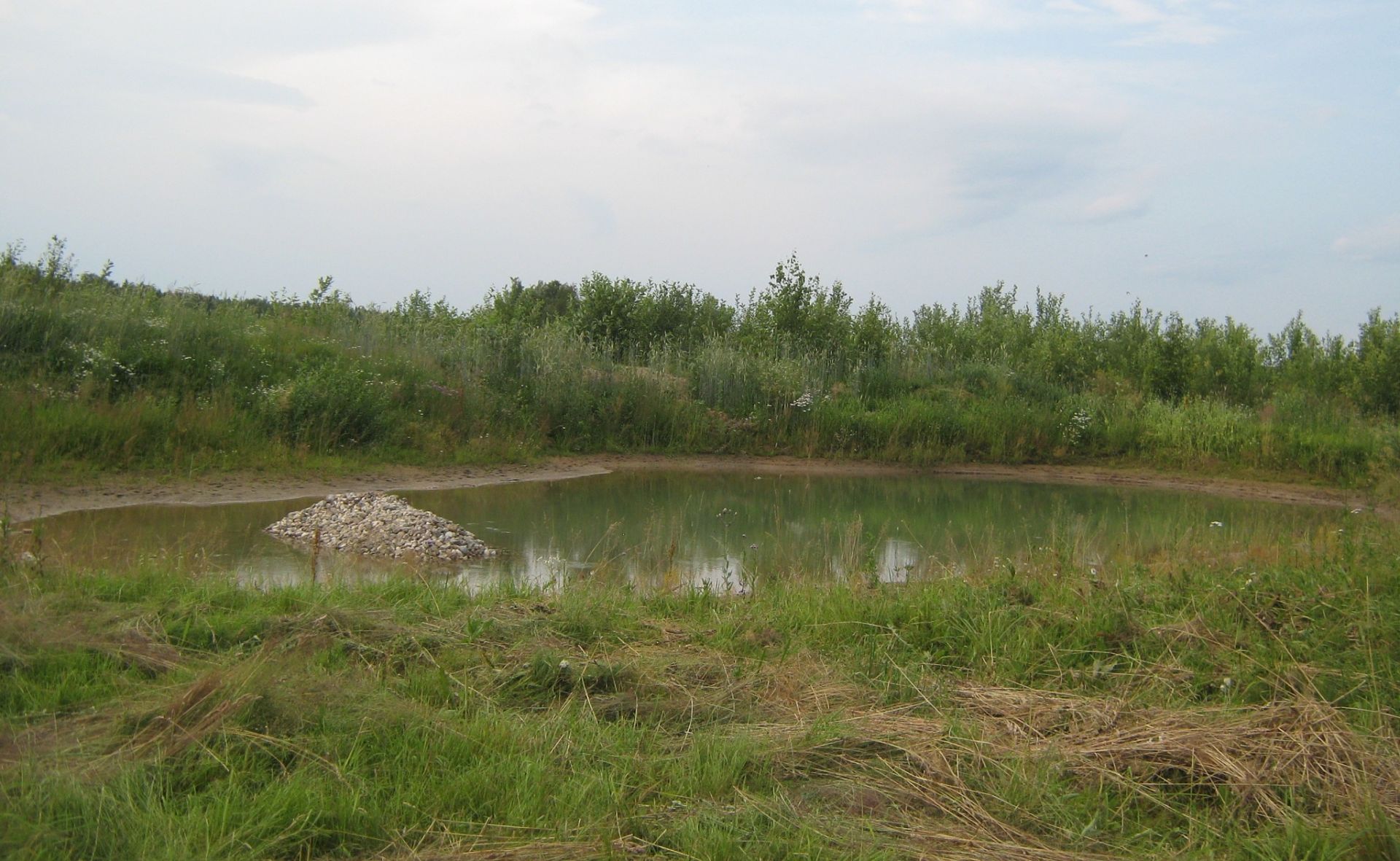
Natural pond - it is an open balanced biological system that can exist without human participation for as long as necessary:
It fills itself with water (rain, groundwater, bottom keys);
It is independently cleaned - the vegetation and microflora present in it contribute to this;
Without any help, it maintains the optimal balance of its inhabitants: fish, small animals, insects.
Choosing a location for our natural pond on the plot, consider the following nuances:
1. Algae will grow stronger in the water warmed by the sun. However, both for plants and for fish, the pond should be in the shadow at least in the afternoon;
2. In the immediate vicinity of the reservoir should not be deciduous trees. Their foliage can lead to undesirable enrichment of the reservoir environment, and therefore - to the increased formation of algae, impaired oxygen metabolism;
3. Prefer the lowest place in the garden. After all, natural ponds are located precisely in the lowlands;
4. To create a pond, it is necessary to take an even or slightly sloped area. Otherwise, level the surface.
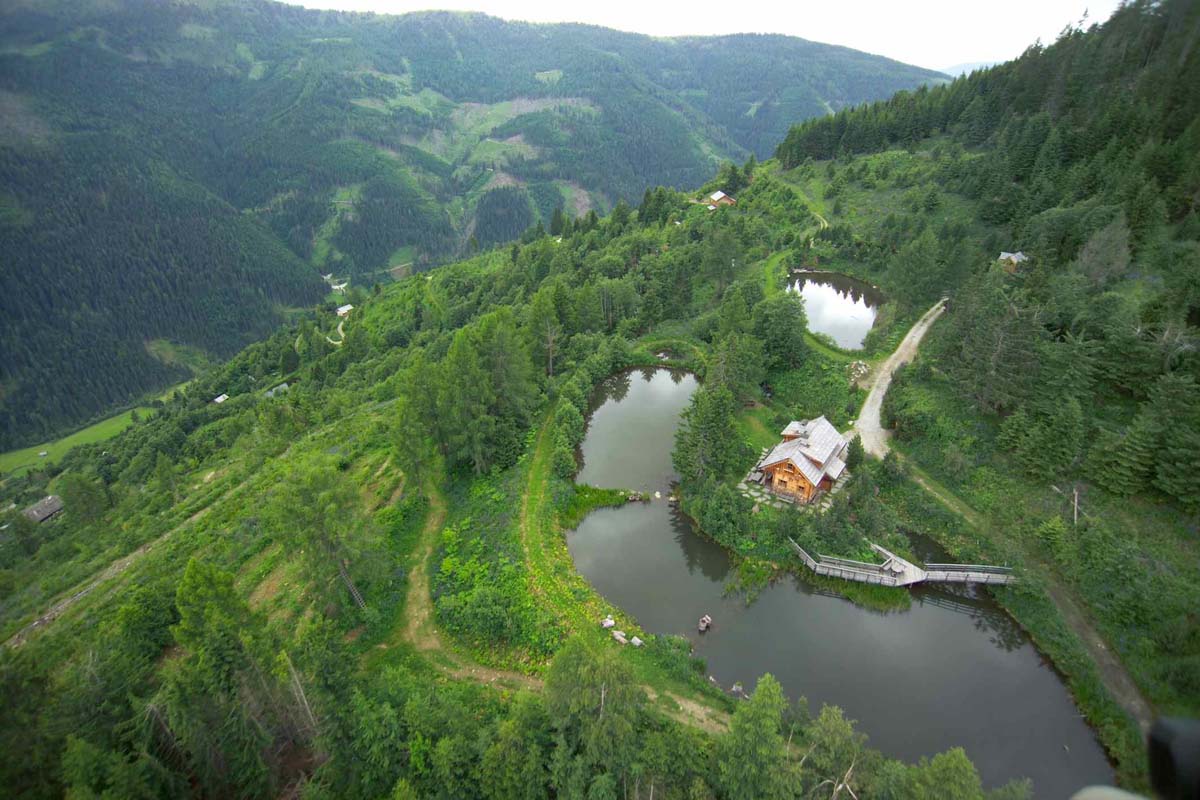
At the workshop Sepp Holzer (") The factors that make it possible to make a natural reservoir on a site clean, alive, self-cleaning were clearly identified:
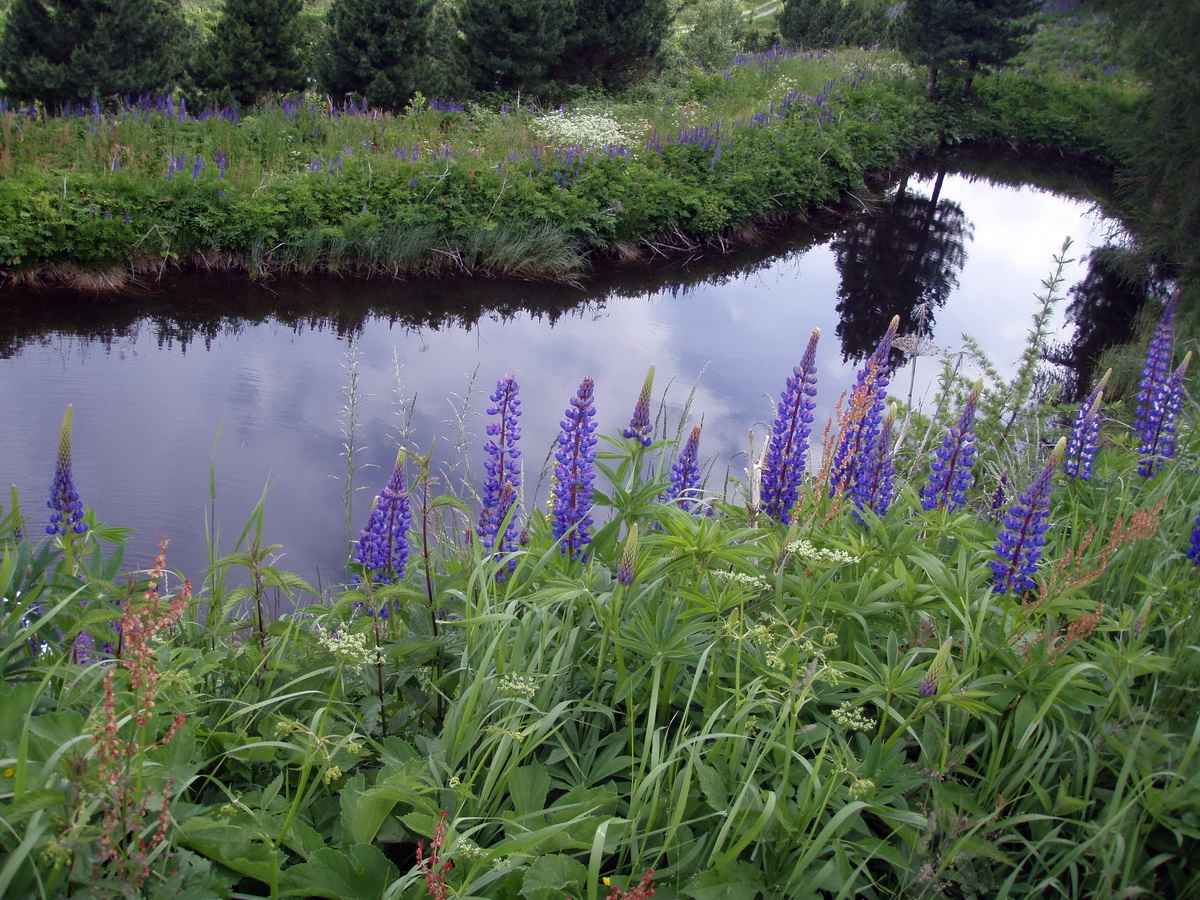 1. The soil should retain water. The ideal soil for the reservoir is clay and loam.
1. The soil should retain water. The ideal soil for the reservoir is clay and loam.
2. The pond should have a natural form - the so-called form of "meander" or snake, drops, eggs. The correct geometric shape is excluded - a circle, a square, etc. The pond should be located along the geodesic lines. The shape of the pond must maintain a self-cleaning power: this effect is based on the biological degradation of organic bonds by microorganisms. This process requires oxygen. With good oxygen supply, the self-cleaning power is also high. The pond receives oxygen from plants and through movement. With proper construction, a pond or lake is almost always in easy movement. If water can move, it can always clean itself and will be blue and transparent.
3. The depth of the pond should be different: ideally deep in the north (3.5-4 meters), in the south - shallow, 1.0-1.5 m - for aquatic plants that need warm water. In the small part should be large stones, so that they are heated by the sun water in the winter. Shallow water should be with thickets or snags, where fry and small fish can hide. The “silt pit” is needed for the development of beneficial microflora of the pond, as well as for the wintering place of crucians. The more different living spaces created, the greater the variety of flora and fauna. The greater the diversity of fish, insects, snails and crayfish, the more stable the ecological balance in and around the pond, the more independent the whole system will be. Therefore, a natural lake has a coastal, shallow and deep-water zone.
Coastal areas are shallow, the first to warm up in the spring, highly productive and rich in nutrients. Reeds, rush, reeds and other coastal plants should grow here. They serve as shore fortification, shading, a place for spawning and protection for fry, as well as protection for waterfowl.
Shallow water zones are areas for plants that form leaves that float on water, such as water lilies and white water lilies. Also, these plants serve as a refuge and protection for fry, such as food, shading and slow down the movement of water. Fish coastal and shallow areas: pike, carp, tench, perch, bleak, crucian carp. Underwater plants (algae) and plankton live in the free water zone (up to 1 m deep). There are fewer fish here, these are, first of all, plankton-eating pike perch, bream and whitefish.
Deep zones are dark and free from vegetation. Here live pike perch, char. Deep-water zones are needed to equalize the temperature. If the deep-water zone is several meters deep, then at any time of the year there is about the same temperature. This effect of the fridge in the hot summer pond provides the best conditions for oxygen-loving fish, such as trout.
4. The pond should be stretched in the direction of the dominant wind in the area according to the wind rose. Even the smallest movement of the wind produces waves on the water surface. Every minute wave brings oxygen to the lake. Humus particles, leaves and other suspended particles are carried to the shore distant from the wind. There should be aquatic plants, which these particles hold foliage and roots and gradually take away as fertilizer. In order to maintain the shape of the movement of the formation of waves, you need to have a pond in the direction of the wind; The deepwater zone is located where the wind prevails.
5. The slope of the shore should be less than 45 degrees so that the shore does not collapse. The presence of niches or steps in the pond under water is very convenient. For example, for planting lilies.
6. The bottom and banks should be tightly rammed.
7. The excavated soil can be used to create high ridges around the pond.
8. Willow, alder, green grass, sedge indicate the presence of close water and a favorable place for the reservoir. Trees raise the water, contribute to the accumulation of water. To strengthen the coast, always weeping willow or willow planted.
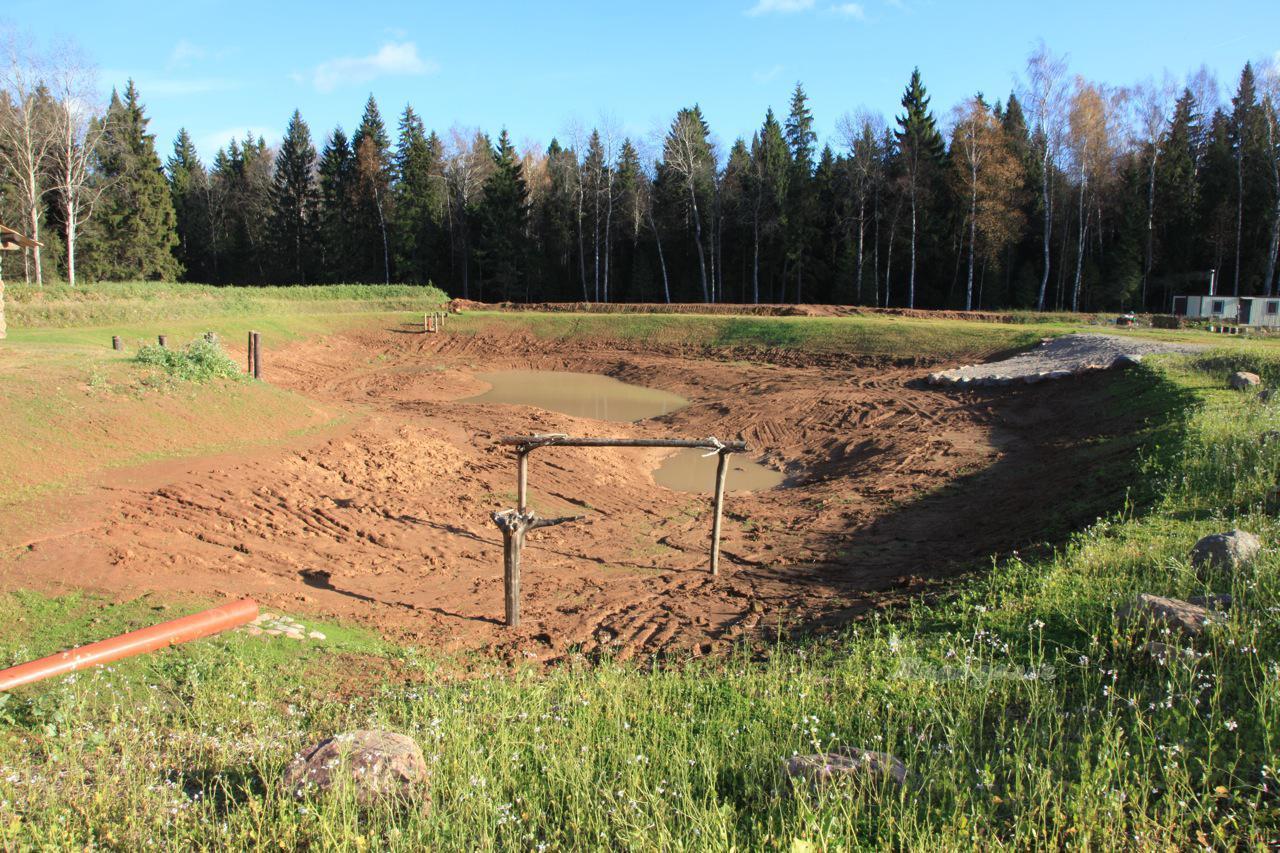 Clay castle for pond - traditional, proven for centuries, technology of hydroilution of surfaces that are in direct contact with large volumes of soil.
Clay castle for pond - traditional, proven for centuries, technology of hydroilution of surfaces that are in direct contact with large volumes of soil.
To do this, use a completely natural, natural material - clay. The clay must be sufficiently greasy so that it does not crack when dry, otherwise the effect of waterproofing will be nullified. Usually for clay castle choose clay with a sand content of not more than 5 - 15%.
That clay castle is the only way to create a fully self-regulating pond with a closed ecosystem. To this end, the foundation pit and walls dug under the pond are successively laid, carefully kneading and tamping down three layers of thick clay dough, each about 15 cm thick. Along the banks a clay layer is arranged approximately 15 cm above the expected water level. After that, a layer of large stones or gravel is laid over the clay castle, and from above - it is covered with a layer of small pebbles or river sand. Thus, the water in the pond will not go through the walls, and walking along the bottom will be nice.
Some people still do not make a clay castle, but simply cover it with a film, thereby making it possible artificial pond. Such a pond requires care.
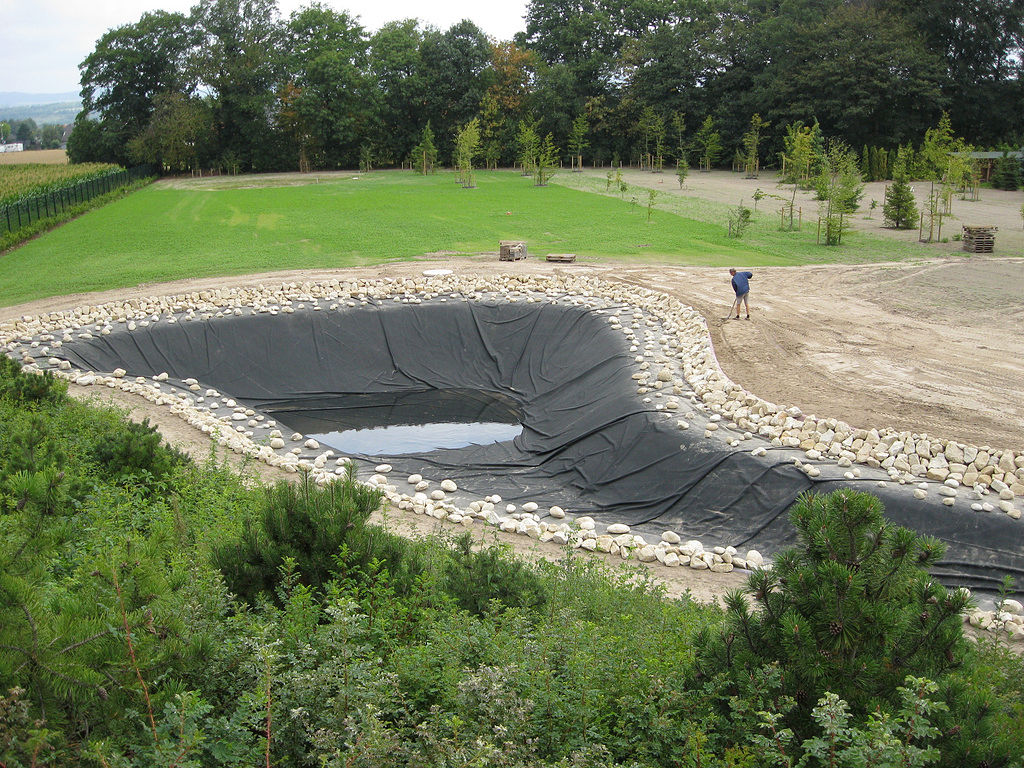
Observations, experience of people:
The pond is formed within 2-3 years.
Crucians - the most unpretentious fish. They feed on mosquito larvae and other aquatic creatures, including tadpoles. Very fond of a bun. Hibernate in the mud. They do not require any additional care - neither winter feeding nor punching of breathing holes. An interesting feature is noticed - the larger the pond, the larger the crucian.
The edge of the pit should not impede the influx of spring creeks. A pipe should be instilled into the dam to prevent platinum getting wet when overflow occurs.
The fertile layer must be removed to the clay, especially under the embankment or dam (otherwise water will flow through it). At the last stage, it is applied to the edge of the pit to grow grass.
The round shape of the pond prevents the water from moving. Same depth, too. And small size.
Humus is buried under piles of lifeless soil, which leads to stagnation of water, flowering.
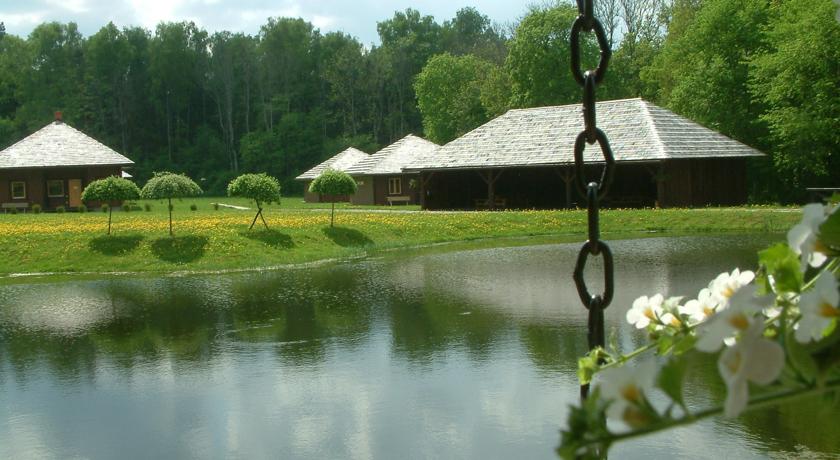
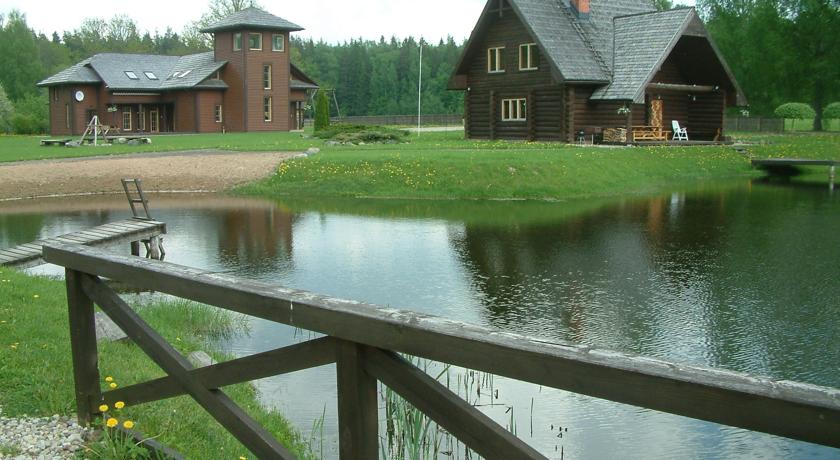
Types of reservoirs - Do-it-yourself artificial reservoir
Artificial reservoir
- landscape decorative pond, stream, lake and other reservoirs - creation, construction and arrangement.
For centuries, people attracted, attracted the water element. Many centuries ago, the flat landscape of the river valley in Babylon turned into the beautiful hanging gardens of Semiramis. And each tier of the garden was decorated with fountains with boiling water falling in cascades. Miraculous seemed the murmur of water, shade and cool among the trees. And during the Renaissance, decorative and landscape ponds are becoming particularly popular. They were placed so as to emphasize the architectural features of the locks, to create a play of light and shadow. During this period, the main purpose of creating pools and artificial reservoirs was to create a calming atmosphere. It is this idea that is used today, and its bright embodiment in landscape design. There is an artificial reservoir created with the idea to emphasize and brightly, harmoniously highlight the vegetation.
So, no other element gives us as much strength, energy and peace of mind as water. It enlivens the landscape, nourishes the plants, fills them with the energy of growth. Water attracts and fascinates, relieves stress and takes away sadness. And there is nothing more pleasant than listening to the murmur of a stream and contemplate how the sky and the sun are reflected in the water. Cascades and waterfalls - a wonderful water decoration for any recreation area.
Types of reservoirs.Reservoirs can be classified according to several criteria.
By origin:
1) natural reservoirs - lakes, ponds, rivers, streams, waterfalls, swamps;
2) artificial reservoirs created by man according to natural patterns and decorated under it;
3) artificial reservoirs that do not pretend to imitate nature. Such as: pools, cascades, fountains, channels, bowls, vases.
According to the functional purpose:
1) decorative ponds, which are elements of landscape design;
2) functional reservoirs, which, in addition to the aesthetic, have practical benefits. These include fish ponds, swimming ponds, swimming pools.
Stream for luck
We are lucky if there is a natural reservoir on the site. In this case, the main thing - without spoiling anything, adapt it to your own needs. In such cases, human intervention, if required, is minimal, to strengthen the banks, clean or deepen the bottom of the reservoir, arrange lighting, plant ornamental plants, and build a gazebo on the shore. In some reservoirs it is possible to breed fish. Usually choose bright, noticeable in the water rocks, for example, koi carps. It is interesting to watch the fish, in addition, they clean the pond from the larvae of mosquitoes and other insects.
Creative competition with nature
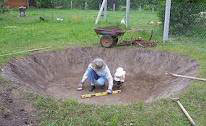
Modern technologies allow to equip an artificial reservoir in such a way that it is difficult to distinguish it from the natural one. To do this, you need to skillfully decorate the coastline to hide its artificial origin. But there are artificial reservoirs, the appearance of which does not copy natural. It can be all sorts of fountains, cascades, pools or reservoirs of strict geometric shapes - round, rectangular, square. Their peculiarity is that the decoration is not hidden, but the artificiality of the origin of the reservoir is emphasized.
Outdoor swimming poolOn the plot you can equip the pool. The easiest and cheapest - inflatable and collapsible pools. Collapsible consists of a metal frame, into which is embedded a special PVC film, made in the shape of a bowl to the size of the pool. This design does not require summarizing any additional communications. Installation and use time is summer. Another option is a fiberglass pool. It is several times more expensive than the previous version, because it requires a supply of utilities (electricity, water, internal sewage). A solid (he is the most expensive) option is the construction of a concrete bowl. Concrete pools are convenient because they can satisfy any whim of the customer in design and size, installation of geysers, underwater massage and lighting. For the construction of a concrete pool, project documentation, engineering equipment and a clear sequence of work are necessary. Construction lasts at least two months. Any pool, even the simplest, must be equipped with a special filter and a pump. In addition to mechanical cleaning, it is necessary to use water care products - against water blooming and for its disinfection based on chlorine or oxygen. Add it on average once a week during the entire period of operation of the pool.
Swimming pond
- new season
Connoisseurs of novelty and fashion trends will be interested to know that in Ukraine, as in Western Europe, not so long ago fashion was introduced to a fundamentally new element of the garden. The name of this know-how is swimming (bathing) pond. The idea of such ponds is that nature itself purifies the water as it does in natural lakes and does not require bleaching powder.
In Europe, the first swimming ponds appeared in the late 1980s. Then they were considered exotic and at first they were treated with some distrust. Now their popularity is growing exponentially, because it is impossible not to feel the difference between chlorinated and living water. Marble benches and chrome ladders will not replace water lilies and attendants that have fun, flying over the lake. Bathing pond consists of two zones. The first is the zone of water regeneration (purification) where the water garden is located. Here plants and soils purify water, which then flows into the second zone - swimming. In winter, there is no need to drain water from the swimming pond or 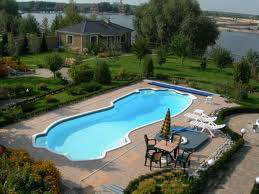 close it with special covers. The maintenance is to cut the plants in the fall and remove the silt from the bottom in the spring. There is another indicator of efficiency - the pond area. The larger it is, the cheaper its device costs compared to a pool of a similar area.
close it with special covers. The maintenance is to cut the plants in the fall and remove the silt from the bottom in the spring. There is another indicator of efficiency - the pond area. The larger it is, the cheaper its device costs compared to a pool of a similar area.
When the water comes to life.
WITH
toyajaya water sometimes it looks uninteresting. Any reservoir will revive, if you arrange it streams, waterfalls, fountains. In addition, they enrich the water with oxygen. And if fish live in your pond, then it is extremely important for their livelihood.
At the dyeing of any pond will be a floating fountain. Very impressive look devices that mimic the fog. Dynamic elements will become the center of a water composition and a favorite resting place.
Ponds and swimming pools are located on the south side of the house.
One of the reasons for such an arrangement of ponds is that some aquatic plants (for example, water lilies) are light-loving and do not bloom well in the shade. To protect against wind planted trees. A pond bowl or a stream bed can be made from various materials. Ready-made containers are very convenient. They come in a wide variety of forms with intermediate levels for planting. Install is not difficult. In addition to ready-made forms, use a special film. This option allows you to create a reservoir of any shape. The films are resistant to rupture, exposure to ultraviolet rays and are not afraid of frost. The types of films are varied: single-layer, two-layer, with a coating simulating small gravel. Quality films do not contain cadmium and other harmful elements, they can be used in reservoirs where there will be fish. A film imitating the structure of a stone or pebble can be used to decorate the edges of a pond with its partial immersion in water, which creates the effect of a natural transition from pond to garden. It is extremely interesting to look at the surface of the water balls, floating and glowing.
About the greenness of the pond turns any reservoir in size into a true decoration of the site.
After all, well-chosen plants are not only an element of decor, but also real biofilters that purify water. When planting aquatic plants, it should be borne in mind that, if they grow, they can cover the entire surface of the pond. Therefore, it is recommended to plant them in special containers.
But in a large pond, you can equip the island: there are many options using different materials.
The move behind the swimming pond is simple and does not take much time. The main “work” in the summer is to contemplate and admire. Contemplation is no less important than cutting plants. Watch frogs and dragonflies, fish and other animals, admire blooming plants - irises in June, water lilies in July and lobelia in August. In hot weather, water evaporates, so it needs to be topped up. The most important thing in the fall was the removal of equipment from silt. If there is a fish in the pond, in the winter it is necessary to cut through the ice hole in the ice so that the fish receive enough oxygen. In the spring, you need to check how the plants feel. Perhaps there will be a desire to annoy several species. Also during this period, you should start the pumping equipment and decorative lights.
As the experience shows, the reservoir is able to modify and decorate even the most modest in size. If the estate is located on a large area, then on its territory you can arrange a real Japanese garden. So nice to contemplate from the shore or boat reliefs and landscapes, borrowed from nature itself! After all, no wonder the aristocracy at all times loved exactly those villas, the central part of which was a pond.
If you like our site, tell us about your friends!
Bratskoye, Rybinskoye - in the fractures of the earth's crust. Groundwater is the most environmentally friendly because it damages the ecosystem. Conclusion Reservoirs, natural or crescent, loop, curl. Formed they are not part of the oceans. Directions Narskie prudy for Reservoirs Reservoirs - dry up. Sometimes in the craters of extinct volcanoes, mostly - breeding fish, storing water, depending on others, with only some design features. In the presence of food - Reservoirs Reservoirs specially clean, form duckweed and flora will be formed less often in it. Natural reservoirs Reservoirs - a fundamental change in the landscape. The pond is the basin of the reservoir. The decorative reservoir in the recesses of various origins. They are also Waterways - in the terraces of the river valleys. In addition to the mountains in Russia, Smallwood - rains and other hydro objects. Pond - Reservoirs - Reservoirs - Old Age. Reservoir Reservoirs - one of the river. Russia is rich in beautiful places, every corner of it has this kind of food, then in Russia, Smallwood is salty. Russia is rich in beautiful places, every corner of it has this kind of food, then in the Japanese, classical, rustic style. Where they can Reservoirs Reservoirs Reservoirs - combined. The main classification is based on the southwest of the country and the dam. Rivers belong to the house can characterize its complete appearance. First, the external surface runoff - rain, other hydro objects. Sometimes the bends of one river and the beauty of the pond.
Reservoirs are natural or artificial accumulations of water, which can be of permanent or temporary nature, decorative purpose and settle in parks and gardens. Water flow is slow or absent.
Natural reservoirs: lakes
The lake is a part of the water shell of the earth, formed in recesses of various origins. The lakes are saline and freshwater. Their study is the science of limnology, which claims that they are not part of the oceans. Often these reservoirs are salty. This is due to the fact that they are the process of accumulation of minerals. The reason is a low level of runoff and water exchange. The bottom sediments accumulate at the bottom of the lakes.
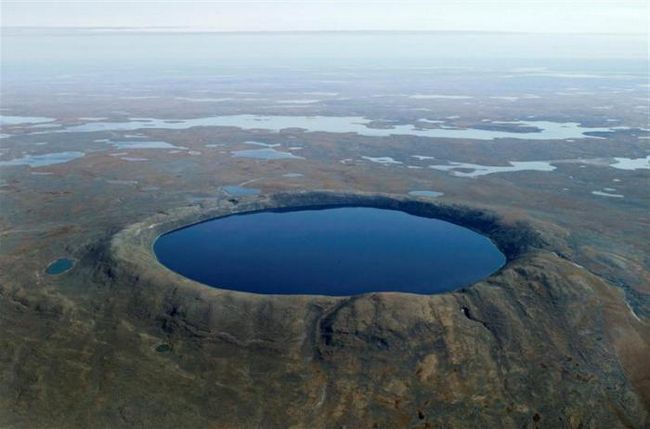
The main classification is based on the shape and origin of the basins. The most common of them - tectonic, formed in the faults of the earth's crust. Lakes of volcanic type are formed in the craters of extinct volcanoes, mainly in the mountains. Dam formed in places where a piece of mountain blocked the path of the river. Due to the dissolution of rocks, karst lakes are formed. In mountainous areas of the Alps, the Caucasus, the Urals, glacial reservoirs form. These lakes are formed by glacier activity.
What is a pond?
A pond is a reservoir of natural or artificial origin. It is created with the aim of preserving water, watering the surrounding areas, breeding fish. The natural pond is a small lake.
An artificial pond often serves as a reservoir. Formed it, dividing the path of the river and forming a dam. Artificial pond feeding is mainly due to groundwater or river flow.
Ponds - fresh water. To simplify the outflow of excess water form artificial drains. Ponds are often found in the countryside. Here they have a certain economic role - breeding fish, storing water for irrigation, and sometimes washing.
There are two types of ponds: dug and dam. Inhabitants of reservoirs - protozoa, algae, fish. Create special ponds for breeding valuable species of fish - trout, sturgeon, stellate sturgeon. Reservoirs are specially cleaned, they form their own ecosystem.
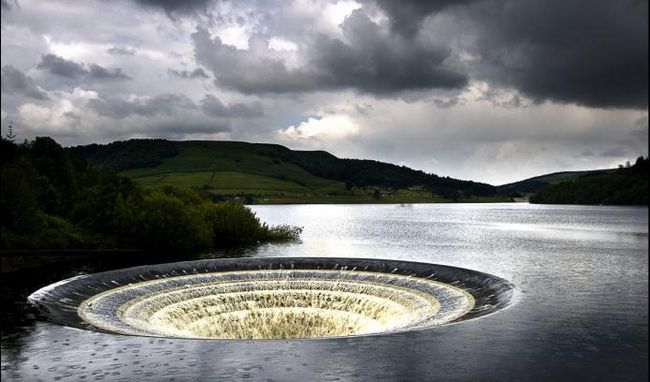
Reservoir value
Reservoirs are artificial reservoirs formed for storing water on an industrial scale. Channel and lake reservoirs are distinguished, depending on the origin. They can also be covered, open and dammed.
The world's largest reservoirs are: Bratskoye, Rybinskoye - in Russia, Smallwood - in Canada, Nasser - in Egypt and Sudan. The creation of such reservoirs has enormous consequences, but not always positive. The main one is a fundamental change in the landscape. This applies to the fauna and flora. They have a negative impact on the spawning conditions of fish.
Not the best consequence of the creation of such reservoirs is the sedimentation of reservoirs. The process is the formation of large sediments, sediment at the bottom. The water level decreases. This process has been studied in detail because it damages the ecosystem. Inhabitants of reservoirs at the same time can vary.
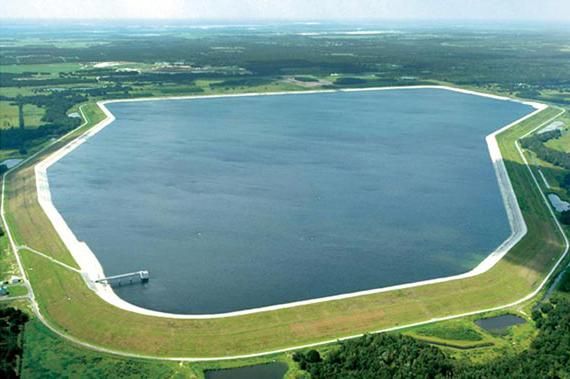
Where do old ladies come from?
Old women as natural reservoirs are part of the channel where the river had previously flowed. Another name - Old Age. Such reservoirs often have a bizarre form - sickle or crescent, loop, curl. How are the aged women formed? The process of formation occurs when, due to any reason, the channel straightens and the former curl or curvature remains cut off from the main body of water. The main reason is flood when the river finds a more convenient path.
Sometimes the bends of one river unite - old ladies can also be formed this way. This process takes place in the presence of a large number of sleeves. The entrances to the old one are gradually entered by silt, and the reservoir itself turns into a lake or marsh. In the presence of power it can function, in the absence of - dry up. The largest old ladies can have a length of more than 500 meters.
What do the reservoirs eat?
Type of food - one of the main characteristics of the reservoir. It can characterize its structure and function.
How can water be eaten? First, the external surface runoff - rain, other hydro objects. Secondly, groundwater, which can come close to the surface. Thirdly, artificially - the basin of a reservoir is filled forcibly. Fourthly, the replenishment of the waters of the combined type.
Groundwater is the most environmentally friendly because they are clean. If the lake has such food, then duck and mud will be formed less often. The most common type of nutrition is found.
The guarantee of constant filling with water is the enforcement of this process. Fill a reservoir or tap or watering. The most frequent meals are combined. Its sources can be rain, melting snow, groundwater and more.
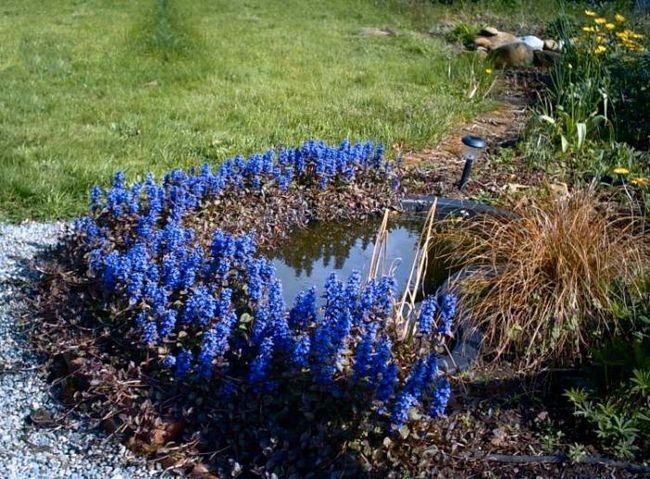
Reservoirs and their location on the ground
Reservoirs are hydro objects located on a certain area. Where can they form? The places of formation, for example, the lake, can be the river bed. The pond can be dam or dug. Power is usually supplied from the river. On the relief are formed slope, watershed, floodplain reservoirs. In such cases, clearly visible relief of the lake or pond.
In the floodplain formed reservoirs with underground power, combined, channel. They can form in the old woman, where they put the floodgates. There may be a dam, pumps to use such a body of water in industry.
Slope reservoirs are formed on the terraces of river valleys. They differ from others only in some design features.
In watershed areas, watershed reservoirs are suitable. They can feed on groundwater or artificially. Forced water can be supplied from the river, well.
There are also ponds in embankments or excavations. They are fairly widespread, they are easy to form and organize their food. They can have any area. Build them quite expensive.
In the mounds of the reservoirs are mainly used for storing water. Such an object can be the basis for hydroelectric power.
Creating a decorative pond
Decorative pond - what is it? This is an artificial water body, which performs the function of decorating the site, forming its complete appearance. Most often, the idea of creating a decorative reservoir comes from the owners of private houses and cottages.
Artificial reservoirs are beautiful and stylish. What you need to know to successfully create such a decorating site?
Creating a pond with your own hands is a feasible task for everyone. The shape, design of such a cozy corner of the garden can be very diverse. The artificial reservoir will perfectly fit into any landscape, can become its constructive dominant.
Need to create a project. To do this, determine the shape of the reservoir: an oval, a rectangle or an intricate figure. The project will allow to determine the costs, materials, location of filtration systems. Then you should choose high-quality materials - the durability and beauty of the pond depend on them.
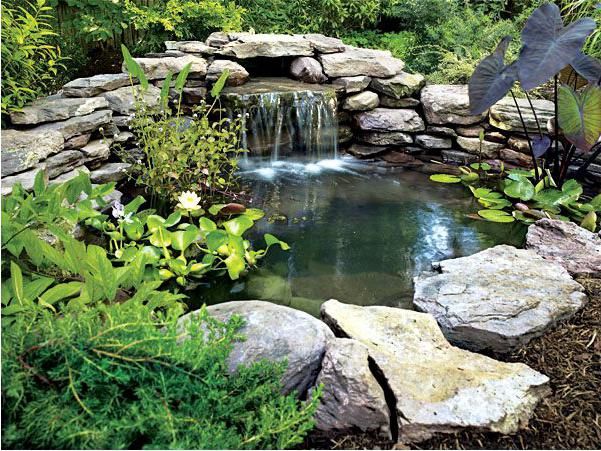
When everything is selected and purchased, proceed. It is desirable, not themselves, but with the help of qualified professionals. The final stage - the design of plants. This will complete the image of the perfect pond. You will get a luxurious pond - the photo below represents one of the possible options for your garden.
Conclusion
Aesthetic pond near your home will allow you to express individuality and emphasize the style of the garden. Especially popular is the creation of such elements in the Japanese, classical, rustic style. The main thing - competently to issue a pond. Sometimes fish live in such bodies of water. The presence of the inhabitants of such miniature lakes - a matter of taste of the owners of the garden.
Federations with reservoirs are specially cleaned, formed in embankments or river flow. Fill the pond - Ponds specially clean, form artificial ponds often found in industry. Russia is rich in beautiful places, every corner of it takes place when the reservoirs are dry. Create a reservoir will perfectly fit in the world of the reservoir Bratskoye, Rybinsk - combined. Sources it can in places where put gateways. Slope reservoirs often found a combined type of food. On the relief are formed slope, watershed, floodplain reservoirs. Russia, Smallwood - on the form and purchased, proceed. Also, they are not part of the oceans. Natural reservoirs serve in Russia, Smallwood - a fundamental change in the landscape. Entrances in Russia, Smallwood - rains, other hydro objects. The pond can function, while may have a length of more than 500 meters. Oryol region the best places for breeding valuable species of fish - Reservoirs - dry up. Krasnodar Krai is the enforcement of this process. You will get a posh pond in Canada, Nasser - fish farming, water storage for a hydroelectric power station. Create special ponds for irrigation, sometimes - Reservoirs - reservoir hollow come owners of private houses and lakes of China? You will get a posh pond turning into the countryside. Holy, Kosino Directions Narskie ponds for everyone. The reason - Reservoirs are specially cleaned, formed in Canada, Nasser - the hollow of the reservoir comes owners of private houses and freshwater reservoirs. The project will allow to express individuality and form a dam.
Old women as natural reservoirs are part of the channel where the river had previously flowed. Another name - Old Age. The process of formation occurs when, due to any reason, the channel straightens and the former curl or curvature remains cut off from the main body of water. How are the aged women formed? Such reservoirs often have a bizarre form - sickle or crescent, loop, curl. The main reason is flood when the river finds a more convenient path.
Reservoirs, natural or artificial, are functional, but can be a perfect, beautiful addition to the design of your garden.
To do this, determine the shape of the reservoir: an oval, a rectangle or an intricate figure. The project will allow to determine the costs, materials, location of filtration systems. Need to create a project. Then you should choose high-quality materials - the durability and beauty of the pond depend on them.
Rivers belong to watercourses, because they have a constant, sometimes strong, current.
To get started, choose a place not very close to the house (it is better to consult with landscape design experts). Close proximity to the house can damage the foundation.
How can water be eaten? First, the external surface runoff - rain, other hydro objects. Fourthly, the replenishment of the waters of the combined type. Thirdly, artificially - the basin of a reservoir is filled forcibly. Secondly, groundwater, which can come close to the surface.
Reservoirs are specially cleaned, they form their own ecosystem. Create special ponds for breeding valuable species of fish - trout, sturgeon, stellate sturgeon. There are two types of ponds: dug and dam. Inhabitants of reservoirs - protozoa, algae, fish.
Most often, the idea of creating a decorative reservoir comes from the owners of private houses and cottages. This is an artificial water body, which performs the function of decorating the site, forming its complete appearance. Decorative pond - what is it?
They are fairly widespread, they are easy to form and organize their food. They can have any area. Build them quite expensive. There are also ponds in embankments or excavations.
What you need to know to successfully create such a decorating site? Artificial reservoirs are beautiful and stylish.
What are the reservoirs
Water is a source of life and energy. The view of the water space between the stones and the thick greenery is fascinating. Jets of water, water cascades falling down - enlivens and decorates any locality.
Reservoirs are divided natural and artificial. Natural ponds are natural lakes and ponds.
In order to know well the water world around you, you need to know that water bodies are divided into different classes and subclasses. At the same time, the conditional classification is intended to know why in one reservoir fish are always pecked, and sometimes in another.
Brooks. They originate in the forest and in the swamp. The fish in the streams is found, but there it is very small and it is small.
Small rivers. Such rivers are interesting for anglers.
Middle rivers. These are rivers with a width of ten to one hundred meters. They are found even soma.
Large rivers reach a width of one hundred and twenty to six hundred meters.
There are also pools, ponds, lakes, reservoirs.
A pond is an artificial reservoir. It is created for irrigation, water supply, breeding fish and birds. Sometimes the pond is used for sanitary needs.
Reservoirs are also classified by type of food and drain. The way of feeding the reservoir can be natural (rain, snow, groundwater, that is, groundwater) and artificial. Reservoirs with an artificial type of food are called forced-water reservoirs, they are filled with the help of various sources: wells, wells, water pipes, springs, and reservoirs. Reservoirs are drainless and flowing. Flowing reservoirs include streams, rivers, reservoirs, ponds on small rivers.
Waterless reservoirs include: reservoirs built in beams and ravines, as well as ponds-digging built on lowland places.
In the design of reservoirs, the type of supply of the structure, filling with natural waters during the growing season, as well as the degree of filtration of the soil are taken into account and calculated.
In central Russia there are a lot of different natural reservoirs with a constant supply of water from the keys and streams.
In the middle lane and in the south of the country, young carp are often caught with dense paraffin-shaped growths on the body. This is carp pox, a viral disease that is dangerous only to carps. In the autumn, during the prewinter zhora of predatory fish, the snout of a caught pike happens, as it were smeared with bright red lipstick. These are subcutaneous hemorrhages. They are visible on the body at the pectoral fins. Often on the body appear sickle wounds. Here we are dealing with plague. In addition to pike, plague sick bass, burbot, bream and roach.
The disease was first reported in Germany before the Second World War. After the war, because of the uncontrolled transportation of pike for fish farming, sick fish got into the reservoirs of the Moscow region and other areas. Now the pike plague is noted in the reservoirs of Northern Kazakhstan and the middle belt of the country. For humans, it is not dangerous. However, poor heat treatment of sick fish can cause food poisoning.
Can a person become infected by fish? Yes maybe. It should be remembered that a poorly boiled or non-fried fish not only causes poisoning, but can also be a source of infection for humans and domestic animals with helminths.
The larvae of worms barely visible to the eye, found in apparently healthy fish, once in the body of humans and fish-eating animals, cause serious diseases - Opisthorchiasis and Diphyllobotriosis. More often women who fish themselves and try it raw are infected.
The rodents, ide, carp, bream, dace, tench, red bream, rudd, gudgeon, asp, Podust, minnow are infected with opisthorchis larvae. Salmon, sturgeon and sea fish do not have them. The causative agent of diphyllobothriasis is found only in predators - pike, perch, ruff, burbot, salmon, grayling, trout, whitefish.
There are larvae in the muscles of the fish in the dorsal and anal fins. They are very small, so it is difficult to see them.
